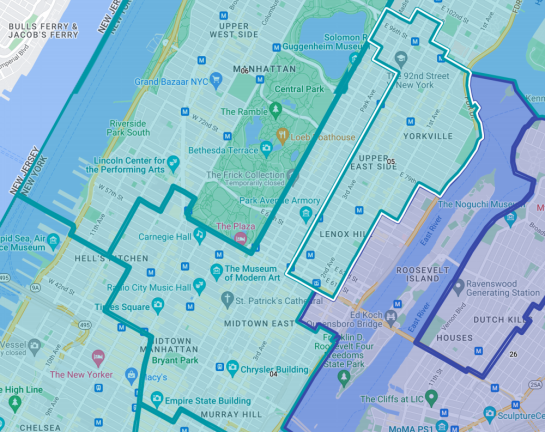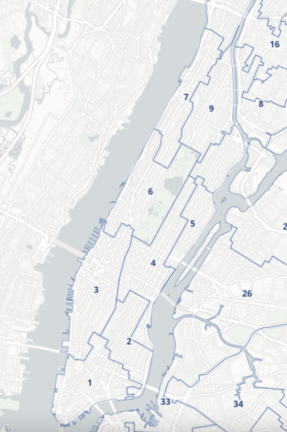‘Preliminary’ City Council Redistricting Is Just That, Council Members Say
The new district lines are the latest to shuffle Manhattan’s borders, though some hope they’ll change yet again


City Council districts are the latest to get a major overhaul as part of a redistricting process on the heels of the latest U.S. census that has caused quite a stir this year. Proposed changes to borders on Manhattan’s east and west sides are among the most notable — though there’s still the likelihood of revisions yet.
The new map of New York’s City Council districts is “far from perfect and is only a first draft subject to significant changes,” Council Member Julie Menin said in a statement. Menin’s District 5 — which currently spans over 40 blocks lengthwise of the Upper East Side along the East River and includes Roosevelt Island — is now proposed to lose both Roosevelt Island and a chunk of Lenox Hill to District 26, across the river in Queens.
Council Member Keith Powers’ abutting Upper East Side district, District 4, is now also due for some changes, namely the addition of blocks in Times Square, Hell’s Kitchen and Columbus Circle.
Currently, Hell’s Kitchen falls nearly entirely within Council Member Erik Bottcher’s District 3, which also spans Chelsea and the West Village. The proposed split of Hell’s Kitchen between three districts — District 3, District 4 and District 6, Council Member Gale Brewer’s Upper West Side district (which already extends a few blocks into Hell’s Kitchen) — would not only “dilute the neighborhood’s political representation and cause a lot of confusion on the ground among residents about who their Council member is,” Bottcher said, but also split up a longstanding community of interest.
“Hell’s Kitchen needs to be kept whole in Council District 3,” he said, adding later that “the Village, Chelsea and Hell’s Kitchen have been a historically LGBTQ community of interest and have had LGBTQ representation.”
Locals Speak Up
The new district lines, put forward by the New York City Districting Commission, reflect an average raise of over 12,000 residents per district, since the 2020 census found that the city’s population had grown to 8.8 million.
The results of redistricting are set to take effect at the start of next year. But some elected officials, like Bottcher and Menin, are hopeful that a process of gathering input from the community between now and then will lead to further changes. Menin has already called on constituents to prepare for a hearing in August. “Now is the time for communities to come out and make their voices heard,” she said.
Some are determined to make their discontent known. On Wednesday night, during a full-board meeting, Community Board 8 on the Upper East Side voted unanimously in favor of a resolution expressing disapproval of the newly proposed lines, after hearing from the public.
“We need a City Council member who is invested in the Upper East Side,” said Elaine Walsh, who spoke on behalf of the East 86th Street Association. “We oppose losing our eastern part of the community to Queens, where we do not have a relationship whatsoever.” Others expressed frustration that the new map seemingly fails to keep communities of interest intact on the Upper East Side.
In September, the commission will present a second draft of the new City Council district lines, after which point the City Council will either vote to approve the map or a third and final redraw will be conducted and ultimately go into effect.
“This is going to be a long, long slog,” said Ed Hartzog, a CB8 member, of the community board’s effort to fight the newly proposed Upper East Side excision.
“Now is the time for communities to come out and make their voices heard.” Council Member Julie Menin